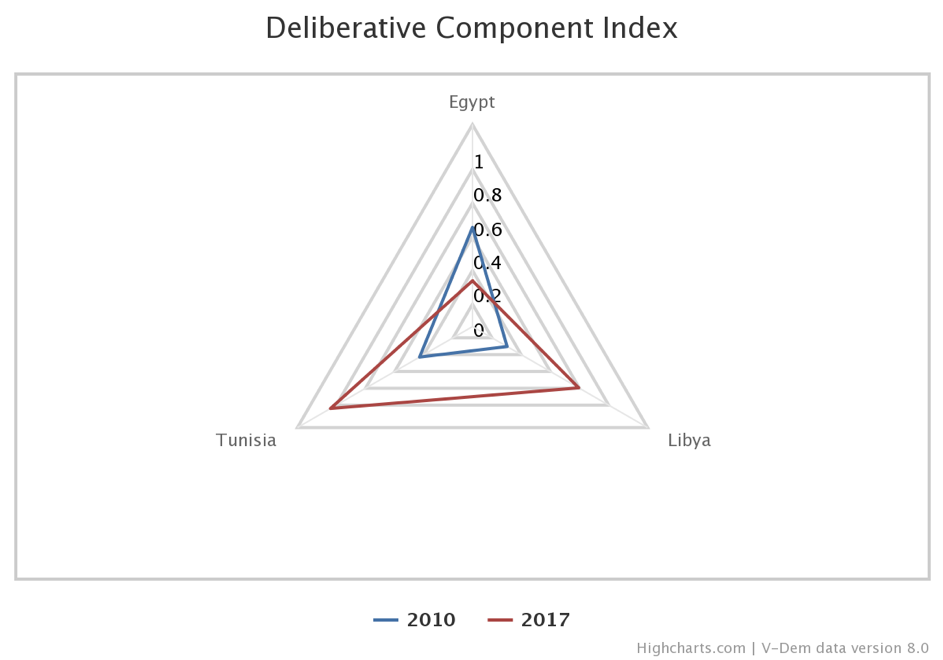Deliberation in Tunisia, Egypt and Libya
By: V-Dem Staff
Jan 14, 2019
On the 14th of January 2011, growing protests in Tunisia forced President Zine El Abidine Ben Ali to flee to Saudi Arabia. This event, among others, inspired additional demonstrations and revolts in the Arab world that are referred to as the “Arab Spring”. However, eight years later, time has shown that only the uprising in Tunisia has resulted in a transition to constitutional democratic governance.
By using the Variable Radar Chart, this week’s graph compares V-Dem’s deliberative component index in Tunisia, Egypt and Libya between 2010 (blue) and 2017 (red). The deliberative component index indicates whether popular desires for a more deliberative politics has been fulfilled. Therefore, our index consists of several indicators such as if there are public and reasoned justifications before important policy decisions are made.
Egypt, Tunisia and Libya have experienced revolts during the Arab Spring. However, there are clear differences between the degree of deliberation today. While deliberation has significantly increased in Tunisia and Libya in the aftermath of the Arab Spring, the values for Egypt have been decreasing since 2010 which has resulted in its lower scores. Hence, the figure illustrates Tunisia’s durable democratization and Egypt’s autocratizatization following Sisi’s coup in 2013. Furthermore, it shows once again that the disparate outcomes of the Arab Spring remains a highly salient subject for research with the potential to increase our knowledge about democratization processes in the 21st century.
To learn more about the indicators of deliberative democracy, take a look at the V-Dem Online Analysis Tool on v-dem.net.


